Toyota Prius: PCS (Pre-Collision System)
The pre-collision system utilizes sensors to identify objects in the vehicle's path. When the system assesses a high risk of a frontal collision with a detectable object, it activates a warning to prompt the driver to take evasive action and increases the potential brake pressure to assist in avoiding the collision. If the system determines the collision risk is extremely high, it automatically applies the brakes to help prevent the collision or mitigate its impact.
The pre-collision system can be disabled/enabled and the warning timing can be changed.
WARNING
For safe use
- Driving safely is solely the responsibility of the driver. Pay careful attention to the surrounding conditions in order to ensure safe driving.
Never use the pre-collision system in place of normal braking operations. This system cannot help avoid or reduce the impact of a collision in every situation.
Over-reliance on this system to drive the vehicle safely may lead to an accident resulting in death or serious injury.
- Although the pre-collision system is designed to help avoid or help reduce the impact of a collision, its effectiveness may change according to various conditions. Therefore, it may not always be able to achieve the same level of performance.
Read the following items carefully.
Do not overly rely on this system and always drive carefully.
- For safe use
When to disable the pre-collision system
When it is necessary to disable the system
Detectable objects
The system can detect the following as detectable objects.
(Detectable objects differ depending on the function.)
- Vehicles
- Bicycles*
- Pedestrians
- Motorcycles*
- Walls
*: Detected as a detectable object only when being ridden.
System functions
2024 Toyota Prius Pre-collision warning
When the pre-collision system determines that the possibility of a collision is high, a buzzer will sound, and an icon and warning message will be displayed on the multi-information display to urge the driver to take evasive action. If the detectable object is a vehicle, moderate braking will be performed along with the warning.
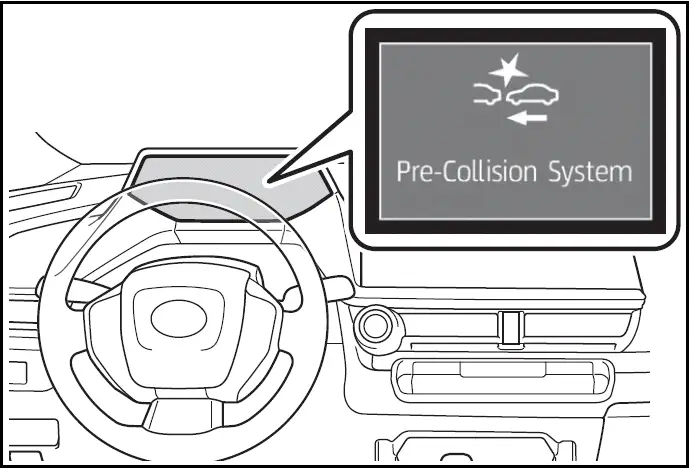
If the system determines that the accelerator pedal is strongly depressed, the following icon and message will be displayed on the multi-information display.
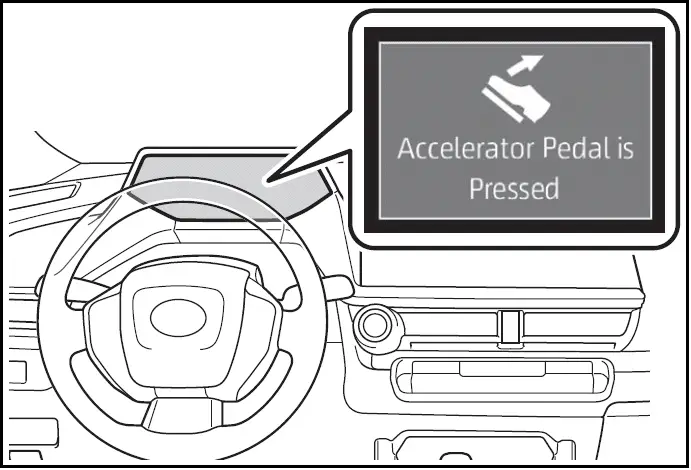
Pre-collision brake assist
If the system determines that the possibility of a collision is high and the brake operation by the driver is insufficient, the braking power will be increased.
Pre-collision brake control
If the system determines that the possibility of a collision is extremely high, the brakes are automatically applied to help avoid the collision or reduce the impact of the collision.
Emergency steering assist
If the system determines that the following conditions are met, assistance will be provided to help enhance vehicle stability and prevent lane departure.
During assistance, in addition to the pre-collision warning, the following icon will be displayed on the multi-information display.
- The possibility of a collision is high
- There is sufficient space within the lane to perform evasive steering maneuvers
- The driver is operating the steering wheel
Vehicles with active steering function: The brakes and steering are controlled to help avoid a collision or reduce the impact of a collision, regardless of the evasive steering maneuvers performed by the driver.
During assistance, the pre-collision warning will operate and a message will be displayed to warn the driver.
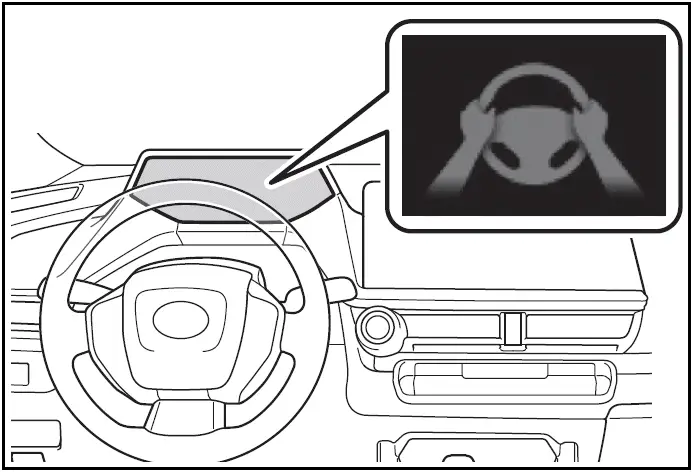
Intersection collision avoidance support (left/right turn)
In situations such as the following, if the system determines that the possibility of a collision is high, the pre-collision warning and pre-collision braking will activate.
Depending on the intersection, assistance may not operate correctly.
- When turning left/right at an intersection and crossing the path of an oncoming vehicle
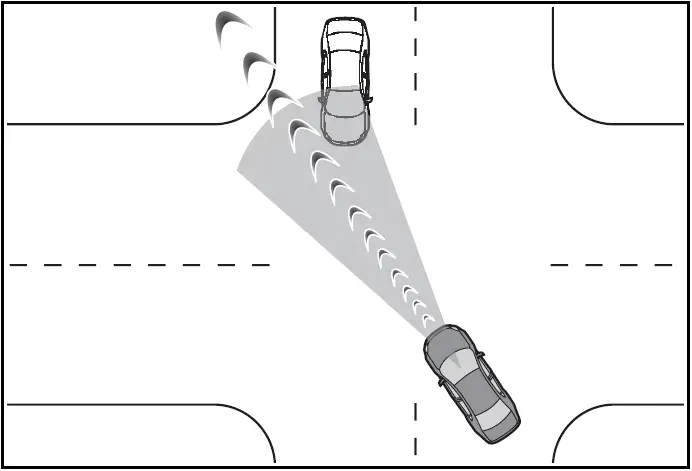
- When turning left/right and a pedestrian or bicycle is detected
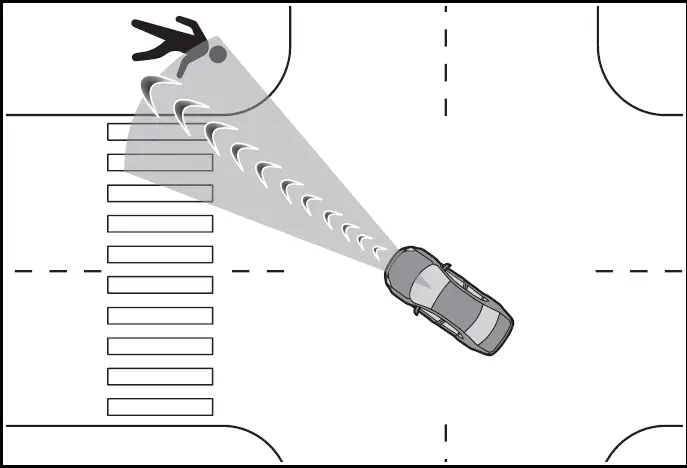
Intersection collision avoidance support (crossing vehicles)
At an intersection, etc., if the system determines that the possibility of a collision with an approaching vehicle or motorcycle is high, the pre-collision warning and pre-collision braking will operate.
Depending on the intersection, assistance may not operate correctly.
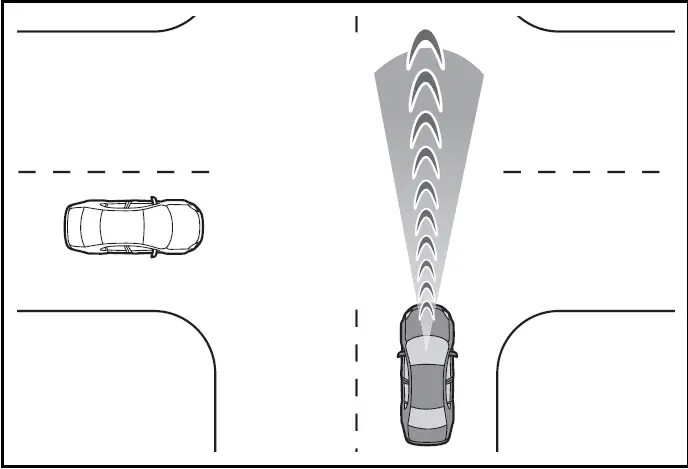
Acceleration Suppression at Low Speed in Toyota Prius
When driving at a low speed, if the accelerator pedal is strongly depressed and the system determines that there is a possibility of a collision, hybrid system output will be restrained or the brakes will be applied weakly to restrict acceleration.
During operation, a buzzer will sound and the following icon and message will be displayed on the multi-information display.
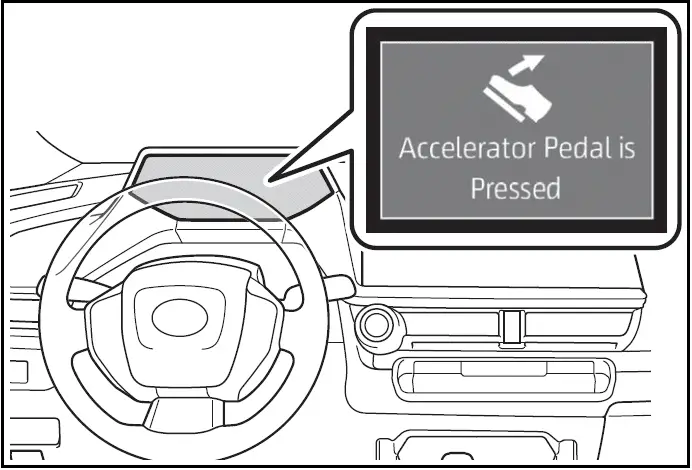
WARNING
Pre-collision braking
When the pre-collision braking function is operating, a large amount of braking force will be applied.
- The pre-collision braking function is not designed to hold the vehicle stopped. If the vehicle is stopped by pre-collision brake control, the driver should operate the brakes immediately as necessary.
- The pre-collision braking function may not operate if certain operations are performed by the driver. If the accelerator pedal is being depressed strongly or the steering wheel is being turned, the system may determine that the driver is taking evasive action and possibly prevent the pre-collision braking function from operating.
- If the brake pedal is being depressed, the system may determine that the driver is taking evasive action and possibly delay the operation timing of the pre-collision brake control.
Acceleration Suppression at Low Speed
If the steering wheel is being turned, the system may determine that the driver is taking evasive action and possibly prevent the Acceleration Suppression at Low Speed function from operating or possibly causing its operation to be canceled.
Emergency steering assist
- The emergency steering assist will be canceled when the system determines that lane departure prevention control has completed.
- Depending on operations performed by the driver, emergency steering assist may not operate or operation may be canceled.
WARNING
- If the accelerator pedal is depressed strongly, the steering wheel is turned heavily, the brake pedal is depressed, or the turn signal lever is operated, the system may determine that the driver is taking evasive action and the emergency steering assist may not operate.
- While the emergency steering assist is operating, if the accelerator pedal is depressed strongly, the steering wheel is turned heavily, or the brake pedal is depressed, the system may determine that the driver is taking evasive action and emergency steering assist operation may be canceled.
- While the emergency steering assist is operating, if the steering wheel is held or turned in the opposite direction of system operation, emergency steering assist operation will be canceled.
Operating conditions of each function of the pre-collision system
The pre-collision system is enabled and the system determines that the possibility of a frontal collision with a detected object is high.
However, the system will not operate in the following situations:
- When the vehicle has not been driven a certain amount after a terminal of the 12-volt battery has been disconnected and reconnected
- When the shift position is in R
- When the VSC OFF indicator is illuminated (only the pre-collision warning function will be operational)
The following are the operational speeds and cancelation conditions of each function:
Pre-collision warning
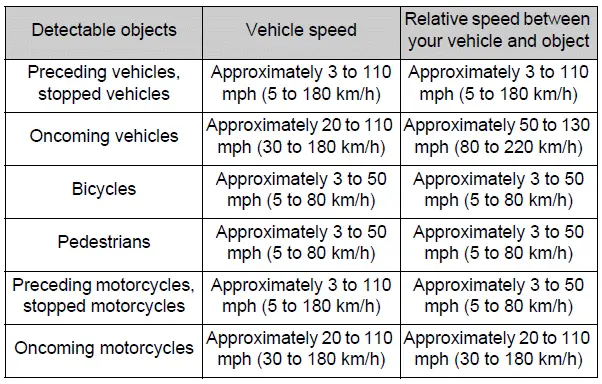
While the pre-collision warning is operating, if the steering wheel is operated heavily or suddenly, the pre-collision warning may be cancelled.
Pre-collision brake assist
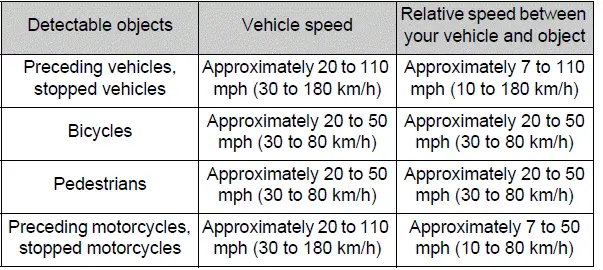
Pre-collision braking

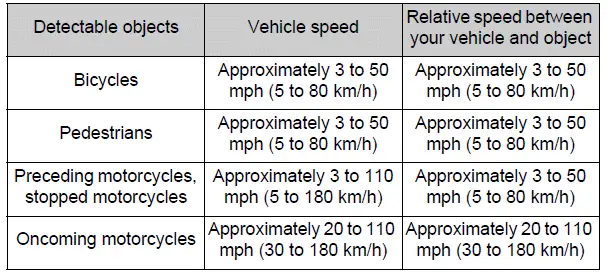
If either of the following occur while the pre-collision braking function is operating, it will be canceled:
- The accelerator pedal is strongly depressed
- The steering wheel is operated heavily or suddenly
Emergency steering assist
The 2024 Toyota Prius features an Emergency Steering Assist system designed to help drivers avoid collisions. When an obstacle is detected, the system provides additional steering support during evasive maneuvers. This technology enhances the driver's steering input to ensure a safer and more effective avoidance action, contributing to improved vehicle stability and control during emergency situations.
The emergency steering assist will not operate when the turn signal lights are flashing.
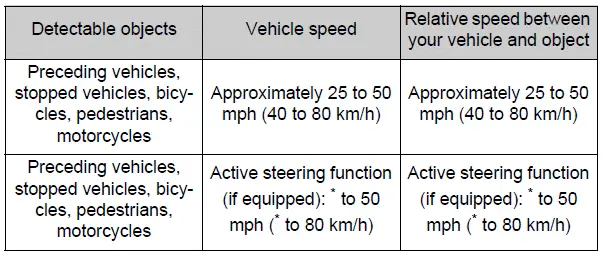
*: Minimum vehicle speed: Vehicle speed at which evasion using pre-collision brake control is difficult
While the emergency steering assist is operating, if any of the following are performed, emergency steering assist operation may be cancelled:
- The accelerator pedal is strongly depressed
- The steering wheel is operated heavily or suddenly
- The brake pedal is depressed
Intersection collision avoidance support (left/right turn)
The intersection collision avoidance support (for left/right turning vehicles) will not operate when the turn signal lights are not flashing.
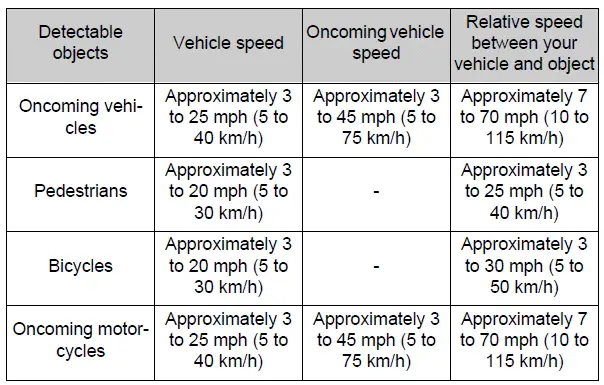
Intersection collision avoidance support (crossing vehicles)
- Vehicles without front side radars
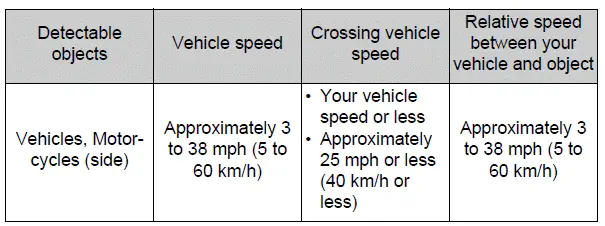
- Vehicles with front side radars

When driving at approximately 29 mph (40 km/h) or more, this system will only operate when the speed of the other vehicle is approximately 29 mph (40 km/h) or less.
The system operates only when the crossing vehicle speed is same as or less than the vehicle speed.
- Acceleration Suppression at Low Speed
The Acceleration Suppression at Low Speed function will not operate when the turn signal lights are flashing.

While the Acceleration Suppression at Low Speed function is operating, if any of the following are performed, the low speed sudden acceleration suppression function operation will be cancelled:
- The accelerator pedal is released.
- The steering wheel is operated heavily or suddenly
Detection of detectable objects
New Toyota Prius (2024) is equipped with advanced detection systems that identify and respond to various detectable objects around the vehicle. Utilizing sensors and cameras, the system can recognize pedestrians, cyclists, and other vehicles, providing timely alerts to the driver. This feature enhances safety by actively monitoring the surroundings and assisting in preventing potential collisions.
Objects are detected based on their size, shape, and movement.
Depending on the ambient brightness, movement, posture and direction of a detectable object, it may not be detected and the system may not operate properly.
The system detects shapes, such as the following, as detectable objects.
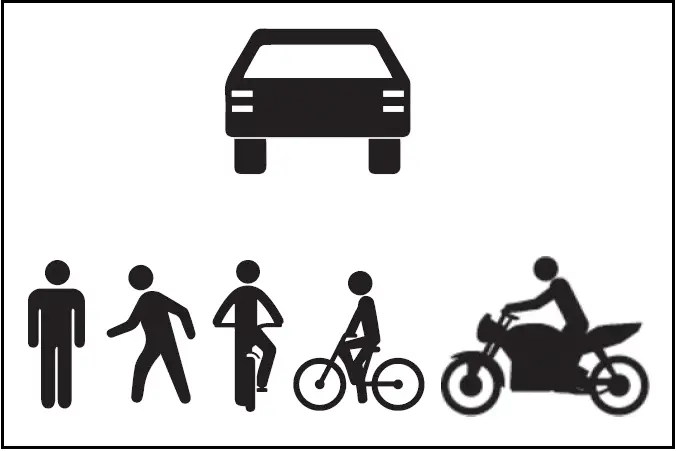
Situations in which the system may operate even though the possibility of a collision is not high
The 2024 Toyota Prius's detection system may activate even when the likelihood of a collision is low. This can occur in situations such as driving on narrow roads, passing closely by parked vehicles, or encountering objects like roadside barriers or bushes. The system is designed to prioritize safety, so it may provide warnings or take preventive actions in these scenarios to ensure optimal protection, even if the risk of a collision appears minimal.
- In certain situations, such as the following, the system may determine that the possibility of a collision is high and operate:
- When passing a detectable object
- When changing lanes while overtaking a detectable object
- When suddenly approaching a detectable object
- When approaching a detectable object or other object on the roadside, such as guardrails, utility poles, trees, walls, etc.
- When there is a detectable object or other object by the roadside at the entrance of a curve
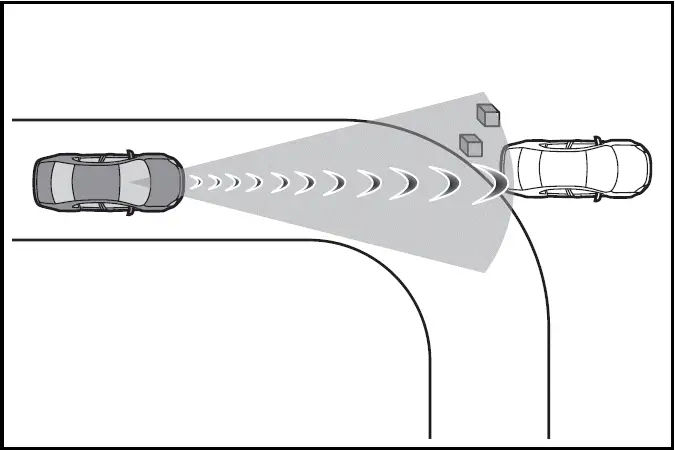
- When there are patterns or a painting ahead of the vehicle that may be mistaken for a detectable object
- When passing a detectable object that is changing lanes or turning left/right
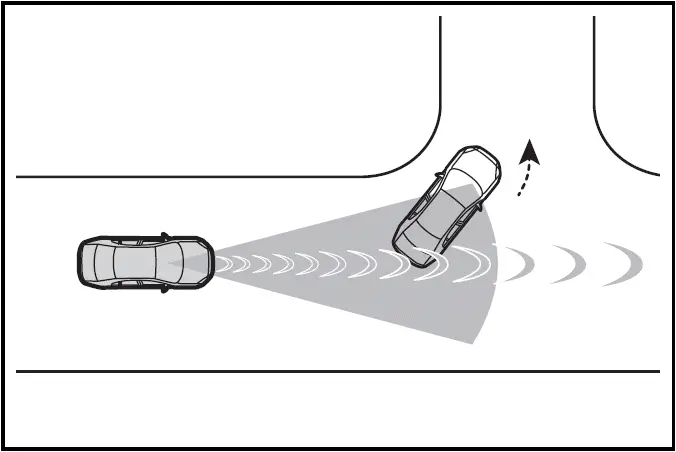
- When passing a detectable object which is stopped to make a left/right turn
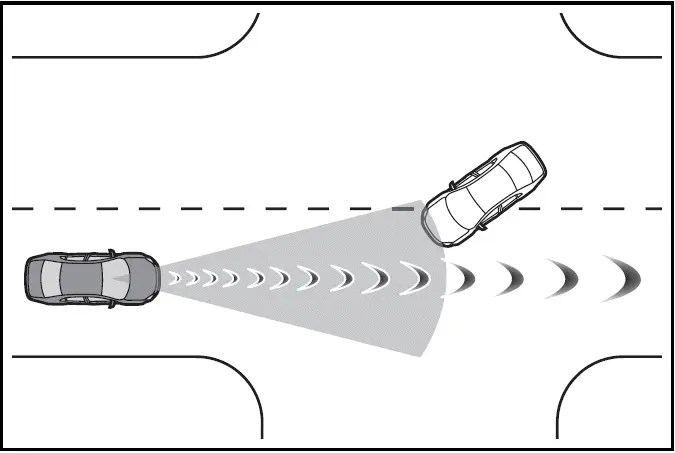
- When a detectable object stops immediately before entering the path of the vehicle
- When passing through a location with a structure above the road (traffic sign, billboard, etc.)
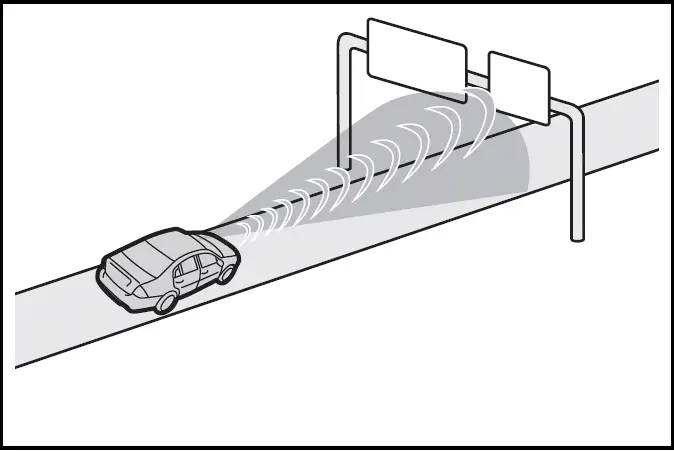
- When approaching an electric toll gate barrier, parking lot barrier, or other barrier that opens and closes
- When turning left/right and an oncoming vehicle, oncoming motorcycle, pedestrian or bicycle crosses in front of the vehicle
- When attempting to turn left/right in front of an oncoming vehicle, oncoming motorcycle, pedestrian or bicycle
- When turning left/right and an oncoming vehicle, oncoming motorcycle, pedestrian or bicycle stops or changes course immediately before entering the path of the vehicle
- When turning left/right and an oncoming vehicle turns left/right in front of the vehicle
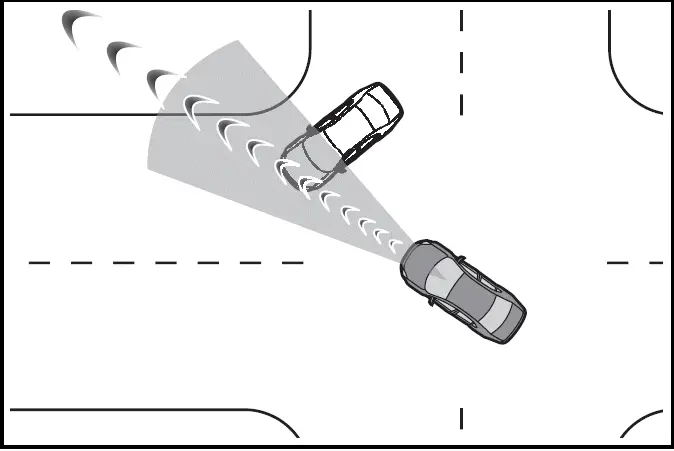
- When the steering wheel is operated toward the path of an oncoming vehicle
- When there is an object moving above or under the road
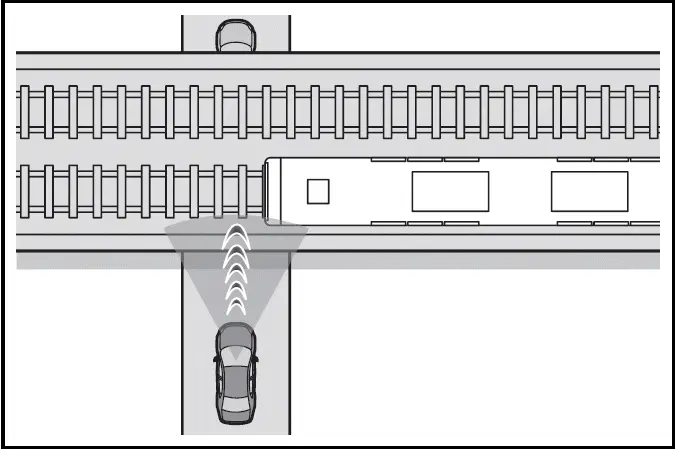
Situations in which the system may not operate properly
- In certain situations, such as the following, a detectable object may not be detected by the front sensors, and the system may not operate properly:
- When a detectable object is approaching your vehicle
- When your vehicle or a detectable object is wandering
- When a detectable object makes an abrupt maneuver (such as sudden swerving, acceleration or deceleration)
- When suddenly approaching a detectable object
- When the detectable object is near a wall, fence, guardrail, manhole cover, steel plate on the road surface, or another vehicle
- When there is a structure above a detectable object
- When part of a detectable object is hidden by another object (large luggage, umbrella, guardrail, etc.)
- When multiple detectable objects are overlapping
- When a bright light, such as the sun, is reflecting off of a detect able object
- When a detectable object is white and looks extremely bright
- When the color or brightness of a detectable object causes it to blend in with its surroundings
- When a detectable object cuts in front of or suddenly emerges in front of your vehicle
- When approaching a vehicle which is diagonal
- If a bicycle is a child sized bicycle, is carrying a large load, is carrying an extra passenger, is carrying a forward leaning rider, or has an unusual shape (bicycles equipped with a child seat, tandem bicycles, etc.)
- If a pedestrian or bicycle is shorter than approximately 3.2 ft. (1 m) or taller than approximately 6.5 ft. (2 m).
- When the silhouette of a pedestrian or bicycle is unclear (such as when they are wearing a raincoat, long skirt, etc.)
- When a pedestrian is bending forward or squatting
- When a pedestrian or bicycle is moving at high speed
- When a pedestrian is pushing a stroller, wheelchair, bicycle or other vehicle
- When a detectable object blends in with the surrounding area, such as when it is dim (at dawn or dusk) or dark (at night or in a tunnel)
- When the vehicle has not been driven for a certain amount of time after the hybrid system was started
- While turning left/right or a few seconds after turning left/right
- While driving around a curve and a few seconds after driving around a curve
- When turning left/right and an oncoming vehicle is driving in a lane 3 or more lanes from the vehicle
- When turning left/right and the direction of the vehicle differs greatly from the direction traffic flows in the oncoming lane
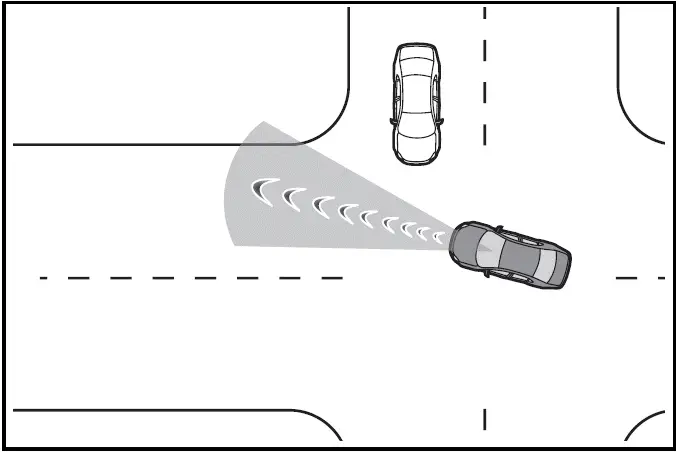
- When turning left/right, a pedestrian or bicycle behind the vehicle comes in front of it as if it overtakes the vehicle
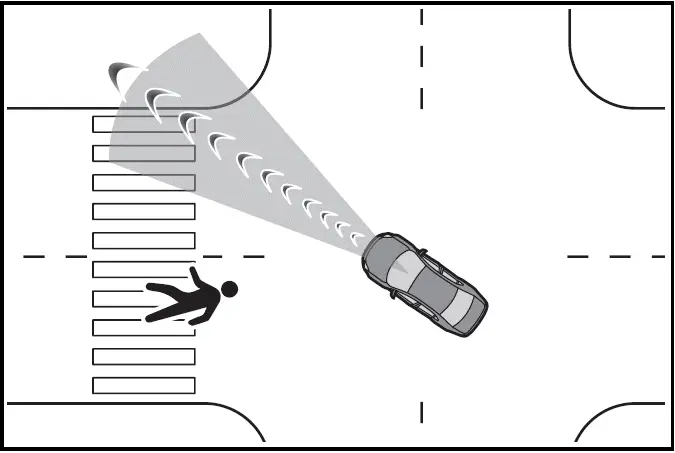
- When at an intersection, the approaching crossing vehicle is long in overall length, such as a large truck, towing trailer, etc
- In addition to the preceding, in certain situations, such as the following, the emergency steering assist may not operate properly:
- When a detectable object is too close to the vehicle
- When there is insufficient space to perform evasive steering maneuvers or an obstruction exists in the evasion direction
- When there is an oncoming vehicle
- In addition to the preceding, in certain situations, such as the following, walls may not be detected as a target object and the Acceleration Suppression at Low Speed function may not operate properly:
- When scenery behind the wall is visible, such as a glass door, grid fence, etc.
- When the wall is slanted or low
- When the wall is narrow, such as a pole, etc.
- When the wall is made of plants, such as a hedge, etc.
- When the road, etc. is reflected on the wall
- When the vehicle is approaching the wall at an angle
Changing the pre-collision setting
- The pre-collision system can be enabled/disabled through a customize setting.
The system is enabled each time the power switch is turned to ON.
- When the system is disabled, the PCS warning light will illuminate and a message will be displayed on the multi-information display.
- The pre-collision setting can be changed on the customize settings.
- Vehicles without active steering function: When the precollision warning timing is changed, the emergency steering assist timing will also be changed.
When later is selected, the emergency steering assist will not operate in most cases.
- Vehicles with active steering function: When the pre-collision warning timing is changed, the emergency steering assist (excluding the active steering function) timing will also be changed.
When later is selected, the emergency steering assist (excluding the active steering function) will not operate in most cases.
- When the dynamic radar cruise control is operating, the pre-collision warning will operate at the earlier timing, regardless of the user setting.

Toyota Prius (XW60) 2023-2025 Owner's Manual
Actual pages
Beginning midst our that fourth appear above of over, set our won’t beast god god dominion our winged fruit image


